- HOME
- Technical Information
- TORELINA™ PPS Resin
- Various Properties
- Electrical Properties
- Insulating Properties
Insulating Properties
Ⅰ. Volume Resistivity
The volume resistivity is one type of electrical resistivity that shows the insulating properties of PPS. By pinching a flat sheet shaped molded product, like that shown in Fig. 7.1, between circular electrodes, the volume resistivity can be determined from the current value after a fixed voltage (500 V) is applied for one minute, according to Ohm's law. TORELINA™ has very low water absorption, such that it can maintain its high insulating properties even in a high-humidity environment. (Figs. 7.2 and 7.3)

Fig. 7.1 Volume resistivity measurement method (double-ring electrode method)
Table. 7.1 Volume resistivity of TORELINA™
| Item | Units | Glass fiber reinforced | GF + filler reinforced | Elastomer improvement | ||
|---|---|---|---|---|---|---|
| A504X90 | A310MX04 | A673M | A575W20 | A495MA2B | ||
| Volume resistivity | Ω・m | 2×1014 | 1×1014 | 1×1015 | 2×1014 | 1×1014 |
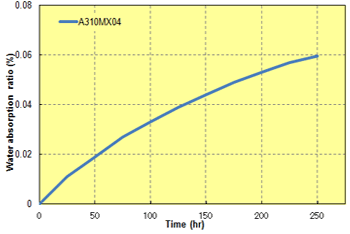 Fig. 7.2 Water absorption ratio (40℃ × 95%RH, 3mmt)
Fig. 7.2 Water absorption ratio (40℃ × 95%RH, 3mmt)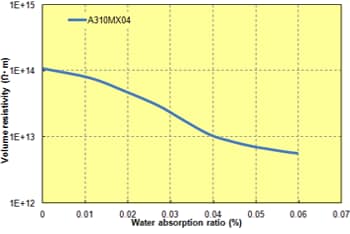 Fig. 7.3 Water absorption ratio in relation to volume resistivity
Fig. 7.3 Water absorption ratio in relation to volume resistivity
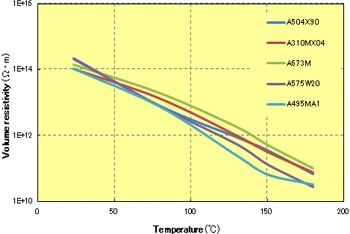 Fig. 7.4 Temperature dependence of volume resistivity
Fig. 7.4 Temperature dependence of volume resistivity
The volume resistivity of TORELINA™ tends to decrease with temperature, but TORELINA™ maintains its high insulating properties of 1010 (Ω・m) or greater even in a high-temperature environment above the glass transition temperature. (Fig. 7.4)
Ⅱ. Dielectric Breakdown Strength
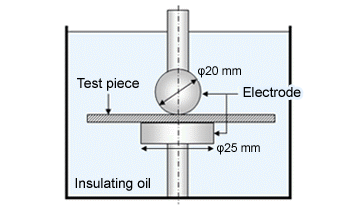 Fig. 7.5 Dielectric breakdown test
Fig. 7.5 Dielectric breakdown test
The dielectric breakdown strength is expressed as the voltage endurance per unit thickness, obtained by dividing the voltage at which the test piece experiences dielectric breakdown by the electrode-to-electrode distance (test piece thickness). (Fig. 7.5) The dielectric breakdown strength of TORELINA™ is determined with a short-time breakdown test method (short-time method), in which the voltage is increased so that dielectric breakdown occurs after 10 to 20 seconds. There are other methods, such as the multi-stage breakdown test method, in which the voltage is increased in stages, at a constant rate, every 20 seconds. (Table. 7.2)
The dielectric breakdown strength of TORELINA™ differs with the type and content of the reinforcement. There is the following tendency: The lower the reinforcement content, the better the dielectric breakdown strength of the material. The dielectric breakdown strength changes little with variations in the environmental temperature, and a high dielectric strength is maintained even in a high-temperature environment. (Fig. 7.6)
On the other hand, the thickness dependence of molded products can be seen. The tendency is such that as a molded product is made thinner, its apparent dielectric strength increases. (Fig. 7.7)
Table. 7.2 Dielectric breakdown strength of TORELINA™ (short-time method, 23℃)
| Item | Thickness | Units | Glass fiber reinforced | GF + filler reinforced | Elastomer improvement | Unreinforced | ||
|---|---|---|---|---|---|---|---|---|
| A504X90 | A310MX04 | A673M | A575W20 | A495MA2B | A900 | |||
| Dielectric breakdown strength | 1mmt | MV/m | 24 | 19 | 26 | 25 | 21 | 30 |
| 3mmt | 14 | 12 | 15 | 14 | 12 | 16 | ||
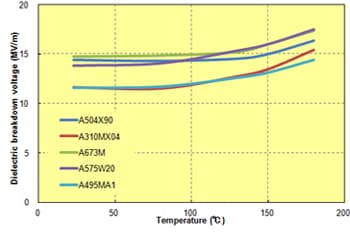 Fig. 7.6 Temperature dependence of dielectric breakdown strength (3mmt)
Fig. 7.6 Temperature dependence of dielectric breakdown strength (3mmt)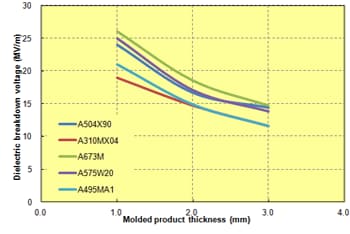 Fig. 7.7 Thickness dependence of dielectric breakdown strength (23℃)
Fig. 7.7 Thickness dependence of dielectric breakdown strength (23℃)